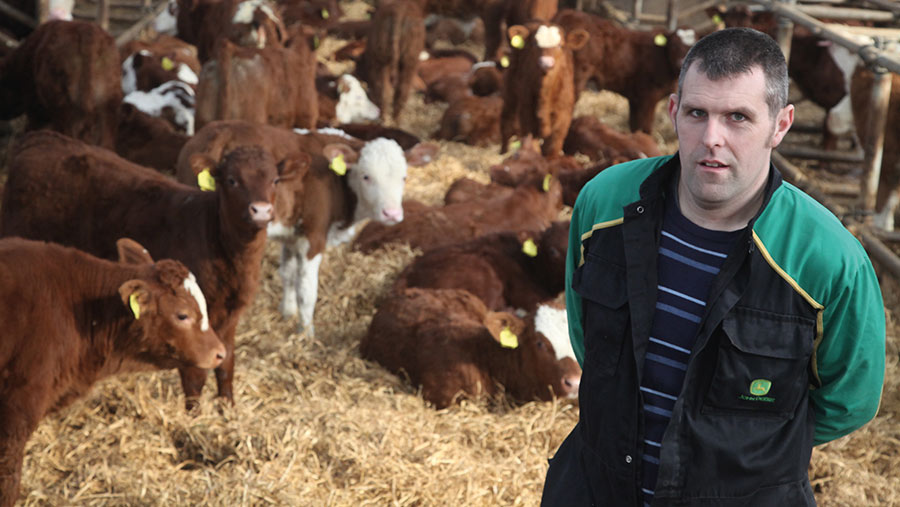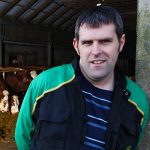Farmer Focus: Weighing shows cow efficiency is up seven percent
 Steven Sandison © Ken Amer
Steven Sandison © Ken Amer After we came home from the Stirling Bull sales, Orkney was a very different colour.
Three days of south-eastern winds at gale force in the form of Storm Babet had changed it to a much duller shade of green.
In the few years we have had sheep, this is certainly the poorest grass that our ewes have been on, before and during tupping. It will be interesting to see if it affects scanning rates.
See also: 4 essential checks to improve suckler herd efficiency
Now the cattle are housed, I can sit down with the scraps of paper I have accumulated over the past month, with weights and prices for all the calves.
This year’s calves averaged 360kg at weaning. Those sold averaged £1,092, with the steer calves averaging £1,120, and the heifers £1,001.
Ever since doing my Nuffield research, “Are benchmarking targets for suckler cows achievable?”, the one question I have been asked a lot is, “What changes have you made at home?”
The biggest challenge I set myself was to reduce cow weight without compromising calf weight.
In 2014, the cows weighed 718kg and the calves were 323kg, meaning a calf was 45% of its mother’s weight. By 2017, I had managed to reduce the weight of the cows to 705kg, and the calves were 324 kgs (46%).
In the years that followed, I intended to weigh them more regularly, but there is always plenty to do the day I am weaning calves, so it hasn’t happened again until this year.
The cows have weighed in at 690kg, down a further 15kg, and weaned 52% of their bodyweight. The calves were an average of 242 days at weaning, which will be 10-15 days older than back in 2017.
I could have housed the heifer calves a month earlier to improve their growth figures, as I’m pretty sure weight gains were poor in November.
However, housing them would have cost me more than £500 in silage and bought-in feed. I’m not willing to spend that just to make the numbers look better.
Despite the fact they have been on their mothers so long, they have still put on more than 1.25kg/day from birth, without any creep feed.

